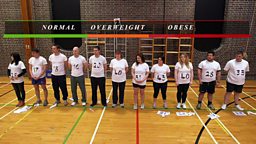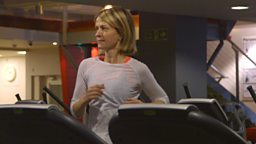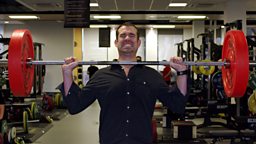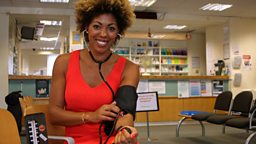How accurate are fitness monitoring gadgets and step counters?
Wearable tech including smartwatches and fitness bands are now owned by 1 in 7 of us, with over 3 million sold in 2015 alone. These devices claim to monitor everything from our heart rates to the amount of calories we burn and the number of steps we take.
But are they accurate?
1) Heart rate
Our heart rate (pulse) can tell us many things about ourselves.

It is a marker of how healthy we are. Healthy adults should have a pulse of about 60–100 beats per minute (bpm) when they are sitting down and resting. However, very fit people may have a lower resting heart rate. If you have a constant pulse of less than 40 or more than 120 bpm, though, you should see your GP as it may be a sign of an underlying condition.
While our resting pulse is an indicator of our health, our pulse when we exercise is also an important measurement of our fitness. To know if we are doing enough exercise or to estimate the intensity of our exercise, monitoring our heart rate can be really helpful.
You can estimate you maximum heart rate with a simple calculation:
220 – your age
(So if you are 50 then your maximum heart rate should be 170).
When carrying out exercise, use this as a marker of how intensely you are exercising.
If you are aiming for high intensity exercise, your pulse should be 70–90% of your maximum heart rate.
Going above your maximum heart rate could put too much pressure on your heart and could lead to health problems, so it can be really important to know what your pulse is.
For this and often just for curiosity, people do like to monitor their pulse throughout the day, whether working out or not.
How do heart monitors work?
Wrist worn monitors have sensors that assess the colour of the blood vessels near the surface. As your blood vessels fill and empty with each heart beat, they change colour. The sensors detect this and determine your pulse from that. Some smartphone apps work in the same way, asking you to put your finger over the phone camera.
Chest strap monitors work in a different way. They are close to the heart and when worn with a good connection to the skin, can detect the electrical signals from the heart which control the heart beat. There are consumer versions of these, but professional versions are accurate and used by professional athletes and researchers. They work in a similar way to the electrocardiograms (ECGs) used in hospitals and GP surgeries.
How accurate are they?
To put some wrist monitors to the test, we got a group of volunteers to wear two different wrist straps at the same time as a professional-standard heart rate monitor.
What we found was interesting: there was often a big difference between the wrist monitors and the accurate chest monitor, particularly once the volunteers started exercising and their heart rates went up. This often seemed to be a matter of the commercial monitors being slow to ‘catch up’ with the changing heart beat, whilst the electrically-sensitive chest strap was able to measure it much more accurately in ‘real time’.
So, what’s going on?
Well, we thought there were two major problems with using the wrist straps to record pulse:
Firstly, those with dark skin in our experiment seemed to have more problems with one of the commercial wrist devices than those with paler skin. This could well be due to difficulties detecting the subtle colour changes caused by varying blood flow - people with tattoos on the wrist have also reported similar problems.
Secondly, the wrist monitors can easily be too loosely fitted, this can cause problems with the sensor used to monitor the pulse.
Even when well-fitted, though, the monitors seemed slow to react to changes in heart rate during exercise, so are probably not to be relied on for measuring exercise intensity in ‘real time’. It may be that the downloaded information to an associated app would give an overall better indication – we did not test this feature.
2) Step counting
Many people use devices to measure how many steps they take each day as a way of gauging their activity levels. In order to test a number of devices (3 different commercial wrist-strap monitors, a professional chest strap monitor, a commercial chest-strap monitor, and a free smartphone app), all our volunteers took 100 steps and compared what the different monitors told us. The results varied from 75–130 steps. This was true even when we tried swinging our arms more, to give the wrist-based devices more motion to detect.
Overall…
Our very small test session has shown that these devices really aren’t that accurate and in 2016 a legal case was begun in the US against one manufacturer over their claims on accuracy.
If you want to find your heart rate while you are exercising, or at any other time, the best advice is to measure your own. This is easily done by placing your first two fingers against the vein in your neck as shown below, then feel each strong beat and count how many you feel in a minute – no fancy gadgets needed!











































